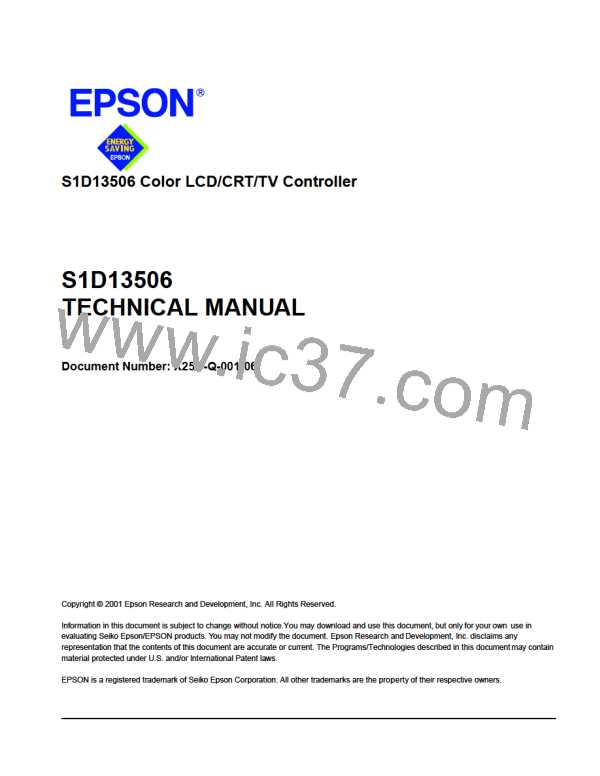Epson Research and Development
Page 5
Vancouver Design Center
Filter Descriptions
When displaying computer images on a TV, several image distortions are likely to arise:
• flickering.
• cross-chrominance distortion.
• cross-luminance distortion.
These distortions are caused by the high-resolution nature of computer images which
typically contain sharp chrominance (color) transitions, and sharp luminance (brightness)
transitions. Three filters are available to reduce these distortions.
Anti-flicker Filter
The “flickering” effect seen on interlaced displays is caused by sharp vertical image transi-
tions that occur over one line (1 vertical pixel). For example, flickering may occur where
there are one pixel high lines, edges of window boxes, etc. Flickering occurs because these
high resolution lines are effectively displayed at half the refresh frequency due to inter-
lacing. To reduce flickering, the anti-flicker filter averages adjacent lines on the TV
display.
Chrominance Filter
The chrominance filter adjusts the color of the TV by limiting the bandwidth of the chromi-
nance signal (reducing cross-luminance distortion). This reduces the “ragged edges” seen
at boundaries between sharp color transitions. This filter is intended for use with composite
video output.
Luminance Filter
The luminance filter adjusts the brightness of the TV by limiting the bandwidth of the
luminance signal (reducing cross-chrominance distortion). This reduces the “rainbow-like”
colors at boundaries between sharp luminance transitions. This filter is intended for use
with composite video output.
13506FILT Test Utility
Issue Date: 01/02/06
S1D13506
X25B-B-005-02

 EPSON [ EPSON COMPANY ]
EPSON [ EPSON COMPANY ]